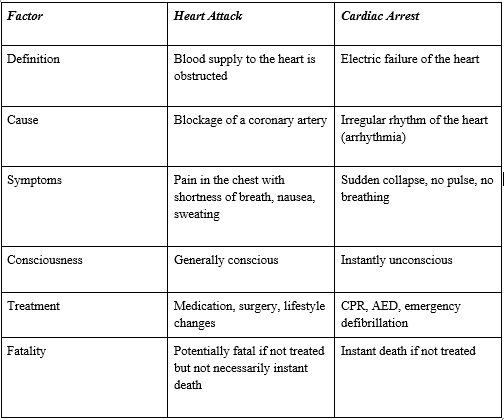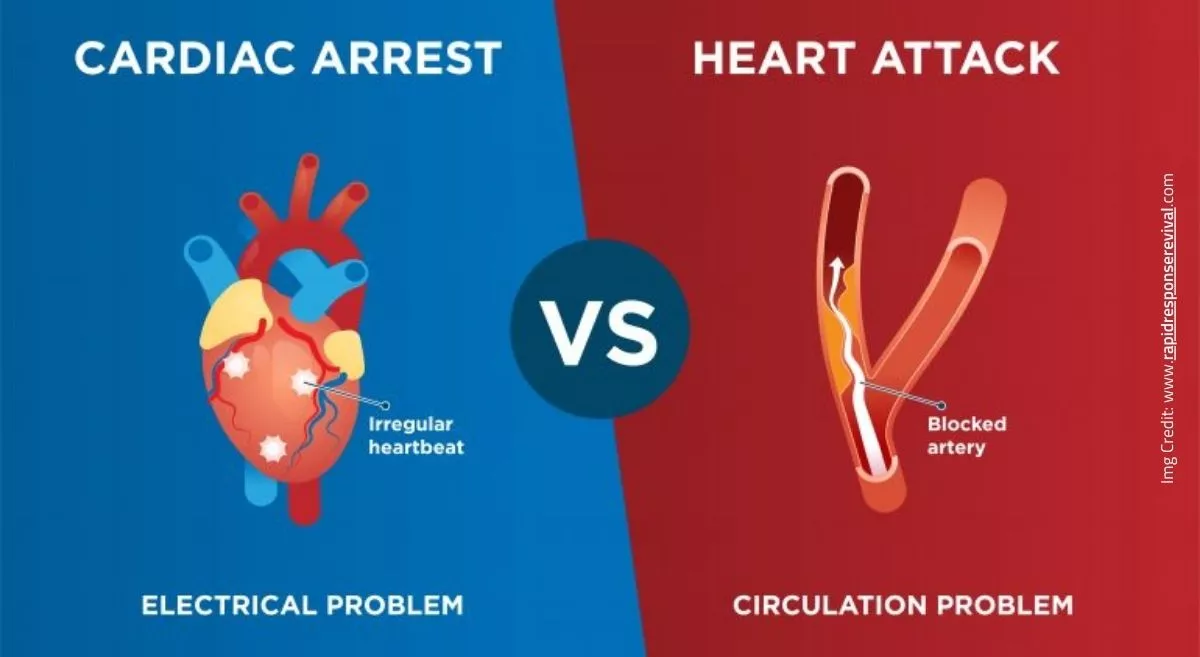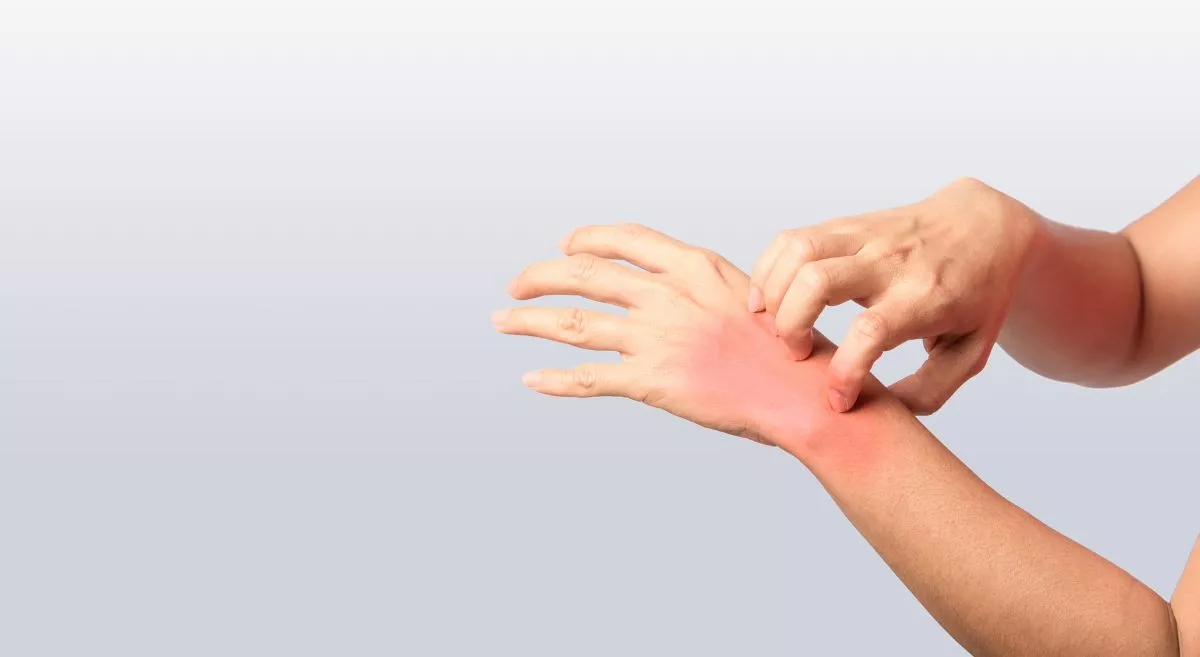Introduction
Heart attacks and cardiac arrest are medical emergencies that may result in death. However, it is possible to save a life by understanding the difference between the two conditions. The two conditions affect the heart but in very different ways. A heart attack results from the obstruction of blood flow to the heart. Cardiac arrest, on the other hand, is an electrical malfunction that makes the heart unable to pump properly. Knowing what causes, symptoms, risk factors, and prevention methods can really make a lot of difference in treating them quickly and effectively.
What is a Heart Attack?
A heart attack also referred to as a myocardial infarction (MI), occurs when blood flow to the heart is blocked, typically due to a buildup of plaque (fat, cholesterol, and other substances) in the coronary arteries. This blockage deprives the heart muscle of oxygen, leading to tissue damage or death.
What are Symptoms of Heart Attack?
The symptoms of a heart attack can vary, but common warning signs include:
- Chest pain or discomfort (pressure, squeezing, or fullness)
- Pain in other areas (arms, back, neck, jaw, or stomach)
- Difficulty breathing
- Cold sweats
- Nausea or vomiting
- Dizziness or lightheadedness
Women, older adults, and people with diabetes often present with atypical signs and symptoms, including severe exhaustion, vague discomfort, or discomfort that feels like indigestion.
What are the Causes and Risk Factors for Heart Attack?
The most common cause of heart attacks is coronary artery disease (CAD)-a condition in which plaque buildup narrows or blocks the arteries. Risk factors include:
- Unhealthy diet (rich in saturated fats, trans fats, and cholesterol)
- Lack of exercise
- Smoking and alcohol use
- Hypertension and hypercholesterolemia
- Obesity and diabetes
- Family history of heart disease
- Chronic stress
Treatment after a Heart Attack
The need for immediate treatment will lead to lesser heart damage. In cases wherein there are the following symptoms:
- Dial emergency services right away.
- Unless allergic to aspirin, chew one to prevent clotting.
- If one becomes unresponsive, there may be a need for CPR.
- Medical interventions include angioplasty, stents, or bypass surgery to restore the blood flow.
What is Cardiac Arrest?
Cardiac arrest is an abrupt, unexpected loss of heart function due to an electrical malfunction leading to an abnormal heart rhythm. The heart ceases beating completely as it cannot pump any blood into the brain and other organs, ultimately resulting in death if left untreated within a few minutes.
Symptoms of Cardiac Arrest
Cardiac arrest occurs without warning. Some of the signs and symptoms include:
- Sudden collapse and unconsciousness
- No pulse or breathing
- Gasping or abnormal breathing
Unlike a heart attack, cardiac arrest is not always preceded by chest pain. It can occur without warning, even when there are no previous symptoms of heart disease.
What are the Causes and Risk Factors for Cardiac Arrest?
Some of the reasons which may cause Cardiac arrest are:
- Ventricular fibrillation (VF): A rapid, chaotic heartbeat that interferes with normal circulation
- Coronary artery disease: Arteries narrowed or blocked, which increases the risk
- Heart attack: A heart attack can lead to cardiac arrest
- Electrolyte imbalances: Potassium or magnesium imbalance
- Severe arrhythmias: Severe irregular heartbeat
- Overdose of drugs or excessive drinking
- Genetic heart condition
- Serious trauma or electrocution
Treatment Option for Cardiac Arrest
Cardiac arrest is a medical emergency and needs to be treated immediately.
- Call emergency services on the phone.
- Start CPR– compressed chest outside the chest at a rate of 100-120 per minute, with hard and fast thrusts.
- Use an AED (Automated External Defibrillator) if on standby. The AED is a device that can administer an electric shock in order to make the heart's rhythm normal again.
- Advanced medical treatment involves defibrillation, drugs, and resuscitation care in a hospital.
Heart Attack vs. Cardiac Arrest: What is the difference?

How to Prevent Heart Attack and Cardiac Arrest?
The heart attack and cardiac arrest are serious medical conditions that occur and it can also be prevented with a healthy lifestyle and early medical attention.
Prevention of a Heart Attack
- Maintain a healthy diet: Have more fruits, vegetables, whole grains and lean proteins in your daily diet.
- Regular physical activity: Aim for at least 150 minutes of moderate-intensity aerobic activity per week.
- Smoking and alcohol: Smoking and excessive alcohol consumption increase the risk.
- Control blood pressure and cholesterol: Regular check-ups are essential for early detection and management.
- Manage stress: Yoga, meditation, and hobbies can reduce stress.
- Diabetes control: Maintain blood sugar levels.
- Healthy weight: Maintain a healthy weight. Obesity is a major risk factor.
Prevention of Cardiac Arrest
- Know your family history: Genetic factors sometimes play a role in heart conditions.
- Recognize warning signs: Look out for frequent palpitations, fainting, or dizziness as it can signal arrhythmias.
- Learn CPR and AED use: When responded quickly, it can save lives.
- Follow a heart-healthy lifestyle: The same principles that prevent heart attacks apply.
- Take prescribed medications: If diagnosed with a heart condition, follow medical advice strictly.
When to Seek Medical Help
- In case you feel chest pain, discomfort, or pressure lasting more than a few minutes
- If you develop signs of feeling breathless, dizziness, nausea, or extreme fatigue
- If you witness or see someone collapsing and becoming unresponsive
Final Thoughts
Both heart attack and cardiac arrests are medical emergency conditions that occur without warning signs. Knowing signs, differences between the two and how to behave can save somebody's life; however, change in lifestyle by staying updated makes it possible not to be under risk of severe conditions. By going for proper check-ups you can stay protected if you, or your one has risk factors.






